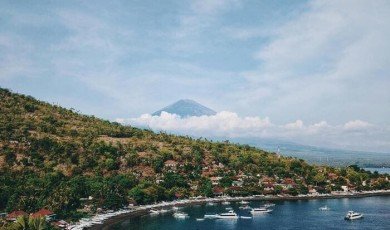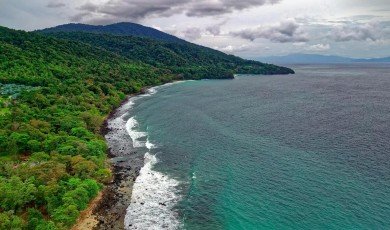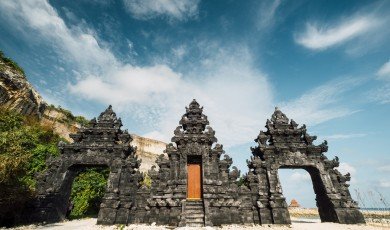Indonesia’s vast archipelago, with its thousands of islands, languages, and traditions, offers a cultural landscape as diverse as it is dynamic. Today, advanced digital solutions are transforming how we document, preserve, and share this richness, empowering creators, educators, and entrepreneurs to bring local stories to global audiences. From remote villages in Kalimantan to bustling creative hubs in Jakarta and Bandung, intelligent technology is helping people capture heritage, amplify regional voices, and design new cultural experiences for the digital age.
For local creators and entrepreneurs, especially those running lean operations, modern platforms make it far easier to turn cultural projects into sustainable ventures. Leveraging specialized AI tools for small businesses enables storytellers, tour organizers, artisans, and content creators to streamline tasks, optimize marketing, and focus on what matters most: celebrating Indonesia’s diverse traditions and communities.
1. Smart Translation Tools for Indonesia’s Many Languages
With more than 700 living languages, Indonesia is a paradise for linguists and a challenge for content creators. Modern translation engines, enriched with machine learning, now support increasingly accurate translations between Bahasa Indonesia, English, and a growing number of regional languages. These systems help:
- Local museums and cultural centers translate exhibit descriptions for international visitors.
- Researchers document endangered dialects and oral histories more efficiently.
- Tour guides create multilingual itineraries that highlight local customs and stories.
As these tools learn from real-world usage, they improve over time, enabling more inclusive access to traditional knowledge, folktales, and historical archives.
2. Content Generation Assistants for Storytelling and Blogging
Writing high-quality articles about Indonesian culture demands both accuracy and creativity. AI-powered writing assistants can help plan, outline, and draft content that highlights everything from Javanese court dances and Minangkabau architecture to Balinese ceremonies and Papuan art. They can:
- Suggest engaging blog titles and headings optimized for search engines.
- Help structure long-form stories about heritage sites, festivals, and local craftsmanship.
- Generate metadata, descriptions, and social captions that improve discoverability.
Used responsibly, these assistants free writers to focus on field research, interviews with community elders, and photo documentation instead of getting stuck at the blank-page stage.
3. Visual Recognition Tools for Batik, Textiles, and Artifacts
Indonesia is renowned for its batik patterns, ikat weaving, songket, wood carvings, and other intricate handicrafts. Image recognition algorithms can identify patterns and motifs from photos, helping to:
- Classify batik by region (e.g., Pekalongan, Solo, Yogyakarta, Cirebon) based on design elements.
- Assist curators in cataloging museum collections and private archives.
- Support learning apps where users take a photo of a textile or artifact to discover its origin and meaning.
When combined with cultural expertise, these tools become powerful educational resources that deepen appreciation for traditional craftsmanship and design symbolism.
4. Generative Design Tools for Modern Takes on Traditional Motifs
Designers across Indonesia are blending tradition with innovation—using historic patterns in contemporary fashion, branding, and digital art. Generative design systems can:
- Create variations of traditional motifs while preserving key symbolic elements.
- Help small fashion labels rapidly prototype collections inspired by regional heritage.
- Produce pattern libraries for use in packaging, websites, and interiors that reflect local identity.
When guided by cultural experts and community input, these tools avoid misrepresentation and instead support respectful, fresh interpretations of age-old aesthetics.
5. Audio and Voice Tools for Preserving Oral Traditions
Many Indonesian traditions are passed down orally—through storytelling, chants, songs, and epic recitations. Speech recognition and audio-processing technologies are proving invaluable for:
- Transcribing interviews with elders and community leaders in their native languages.
- Indexing hours of field recordings from rituals, performances, and storytelling sessions.
- Building searchable archives of endangered languages and local narratives.
These systems make it easier for educators, historians, and cultural workers to organize, share, and study rich oral heritage before it disappears.
6. Recommendation Systems for Cultural Tourism and Experiences
Tourism is one of the key gateways through which people discover Indonesia’s culture. Intelligent recommendation engines can suggest more meaningful and responsible experiences by:
- Highlighting lesser-known destinations, festivals, and community-based tourism initiatives.
- Matching travelers with interests—such as culinary traditions, crafts, or performing arts.
- Encouraging longer stays that benefit local economies beyond the usual hotspots.
By nudging visitors toward authentic encounters, such tools support cultural preservation while distributing economic opportunities more evenly across the archipelago.
7. Data Analytics for Cultural Heritage Management
Cultural institutions and heritage organizations generate significant data—from visitor statistics to conservation records. Analytics platforms help transform this information into actionable insights by:
- Revealing which exhibits or stories draw the most interest across different demographics.
- Identifying patterns in visitor flows that inform exhibition design and signage.
- Supporting grant proposals and policy decisions with clear, data-driven evidence.
When combined with feedback from communities and experts, analytics enables more strategic and sustainable stewardship of cultural resources.
8. Educational Platforms Bringing Heritage into Classrooms
Schools and universities across Indonesia are increasingly integrating cultural content into digital learning environments. Adaptive learning systems can:
- Offer interactive modules on regional history, dances, crafts, and literature.
- Tailor difficulty and depth based on student progress and interests.
- Encourage project-based learning, such as documenting local traditions or interviewing community artisans.
By making cultural knowledge engaging and accessible, these platforms help younger generations stay connected to their roots while acquiring digital skills.
9. Social Media Optimization Tools Amplifying Local Creators
Indonesian creators use social networks to showcase everything from gamelan performances and wayang kulit to contemporary street art and independent films. Optimization and scheduling tools support their growth by:
- Analyzing performance of posts that feature cultural content and identifying trends.
- Recommending optimal posting times and formats for different platforms.
- Helping segment audiences, from local followers to international fans of Indonesian culture.
This empowers small cultural initiatives—dance schools, community theaters, craft collectives—to reach wider audiences without large marketing budgets.
10. Ethical and Community-Led Approaches to Cultural Technology
As these digital solutions become more powerful, ethical questions arise: Who owns the data? How are communities credited and compensated? Are sacred or sensitive practices being shared responsibly? Thoughtful frameworks prioritize:
- Involving local communities in decisions about documentation and publication.
- Ensuring transparent permissions and fair recognition for cultural contributors.
- Balancing openness with protection of sacred knowledge and practices.
When combined with respectful collaboration, technology can support cultural resilience rather than exploitation.
Conclusion: Blending Innovation with Heritage
From language preservation and digital archives to creative reinterpretations of traditional designs, intelligent tools are reshaping how Indonesia’s cultural wealth is discovered and shared. They enable local communities, researchers, and entrepreneurs to work more efficiently, reach global audiences, and create sustainable initiatives rooted in heritage. The key is using these technologies as instruments of empowerment—guided by community voices, cultural experts, and ethical practices.
As more people explore Indonesia’s stories through digital platforms, the opportunity grows to celebrate both tradition and innovation. By combining respect for local wisdom with the capabilities of modern tools, we can help ensure that the archipelago’s diverse cultures not only endure, but thrive in the connected world.







